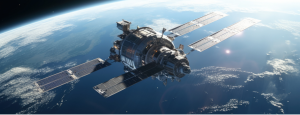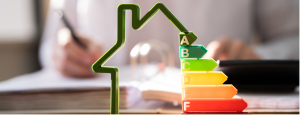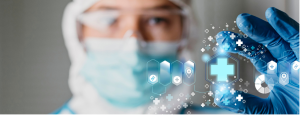
Space & defence: enhancing dual-use satellite technologies in EDF 2025
Space & defence: enhancing dual-use satellite technologies in EDF 2025 David García ArrateSettings The European Defence Fund (EDF) 2025 continues to drive innovation in space
The Technology Readiness Level (TRL) is a measure to describe the state of development or maturity of a technology. This concept emerged in the 1970s at NASA in order to measure how far a technology was from being deployed in space. This scale was used by NASA to identify the minimum flight readiness requirements for each of a technology’s components in order to deem them suitable for a space mission and thus reduce the risk of future missions.
Later, the US Department of Defence incorporated the TRL into weapons technology procurement, which led to its use by other governmental and military organisations, as well as being adopted by the European Space Agency.
The European Union first introduced the concept of LRT in 2009 in a European Commission Communication entitled “Preparing our Future: Developing a Common Strategy for Key Enabling Technologies in the EU”. This article explains the concept of Key Enabling Technologies (KETs) and applies the concept of LTR. However, a more abstract interpretation of KETs is given, as it is not only applied to measure the maturity of a technology for use in the operational environment, but is also interpreted as the readiness of a product or service to be commercialised.
The reason for this interpretation was due to the study conducted by the High Level Expert Group on Key Enabling Technologies. In a study of the European Electronic Component Manufacturers Associations, the Valley of Death was identified as one of the most difficult for technology transfer in the European Union and explained in terms of KETs. The term Valley of Death is a metaphor used to describe a vacuum or bottleneck stage experienced by technological innovation projects after the research and development phases, and before the development of new products and their launch on the market. The EU has mostly focused its research policies on basic and applied science projects, i.e. at low LTRs, but these results are scaled up with difficulty and at an inadequate pace to market-level processes, technologies or services (LTR 9). Changing terminology, we could say that the problem is that basic research does not translate well enough to commercial applications. Hence the sense of using the TRL as a reference to identify the degree of advancement and maturity of technologies, to determine and specify the feasibility of the project and the closeness or closeness of the product to the market.
TRL LEVELS
Since the incorporation, evaluation and use of tools to categorise and define the appropriate stage of development and transfer of an innovative project is key in an innovation process, the European Commission applied the TRL in the Horizon 2020 work programmes in 2014.
In total there are 9 levels in the TRL, in which innovation projects can be classified according to their stage of development and level of commercial readiness:
| Environment | Description | What is expected | ||
| TRL 1 | Lab | The lowest maturity level of an innovation project where the basic scientific research idea begins and the transition to applied research or idea is initiated. | Basic principles observed and reported | Invention |
| TRL 2 | The idea or research has already been grounded and the scientific principles are focused on specific areas of application to define the concept. | Validated results at least at the proof-of-concept level, where at least some applications are expected to be defined. | ||
| TRL 3 | R&D activities including analytical tests, laboratory-scale proofs of concept, aimed at demonstrating the technical feasibility of innovation projects. | To achieve results at a quantitative level, although the results are at the laboratory level, it is hoped to have some specific data on the efficiency and effectiveness of the technology. | Concept validation | |
| TRL 4 | Simulation | The components that make up a given innovation project have been identified and it is sought to establish whether these individual components have the capabilities to act in an integrated manner, working together in a system. | Prototype at lab bench level, where it can be measured with some degree of certainty, that such a prototype can be scalable with measurable competitive and comparative advantages. | Prototype validation |
| TRL 5 | The basic elements of the innovation are integrated in such a way that the final configuration is similar to its final application, i.e. it is ready to be used in the simulation of a real environment. Both the technical and economic models of the initial design are improved, safety aspects, environmental and/or regulatory constraints, among others, are additionally identified. | The prototype has already been validated in a real simulated environment and the user of the technology is aware of the benefits. | ||
| TRL 6 | Pilot prototypes capable of developing all the necessary functions within a given system, having passed feasibility tests under real operating conditions, are available. | The technology or prototype is capable of functioning under the real conditions in which it is intended to operate, e.g. at industrial level.. | ||
| TRL 7 | Real | The system is or is close to pre-commercial scale operation. It is possible to carry out the phase of identification of manufacturing aspects, life cycle assessment, and economic evaluation of technologies, with most of the functions available for testing. | The technology has been refined and data related to financial valuations, real-world prototype validations and life cycle are available. | Pilot production and demonstration |
| TRL 8 | Systems are integrated, have been tested in their final form and under assumed conditions, having reached, in many cases, the end of system development. | The prototype already has measurable and real results under pilot operation conditions, minimizing the risks associated with the transfer. | ||
| TRL 9 | In this phase the innovation is in its final phase and is operable in several operating conditions, tested and available for commercialization and/or production available to society. Delivery of product or technology for mass production and commercialization. | At this stage, the technology has already been sold and tested by the end user. | Arrival on market |
Given the wide acceptance of the TRL as a measure of the maturity status of technologies, new types of scales such as the Business Readiness Level (BRL), Manufacturing Readiness Level (MRL) or Societal Readiness Level (SRL) have been developed in parallel in order to assess the maturity of innovation projects based on other approaches.
If you want to know more about the TRL and crowdfunding environment, please contact us. At Euro-Funding we have dozens of professionals who are experts in identifying calls for proposals according to the maturity level of the project, both at national and European level, to guide both public and private entities in the application process, achieve the required funding and make these ideas a reality.

Space & defence: enhancing dual-use satellite technologies in EDF 2025 David García ArrateSettings The European Defence Fund (EDF) 2025 continues to drive innovation in space

What economic benefits does implementing your energy audit bring? Enrique RocaSettings More than nine years have passed since the publication of Royal Decree 56/2016, which

Health & medical innovation: the role of defence research in civilian healthcare Mónica GarcíaSettings The European Defence Fund (EDF) 2025 determine to support groundbreaking medical
